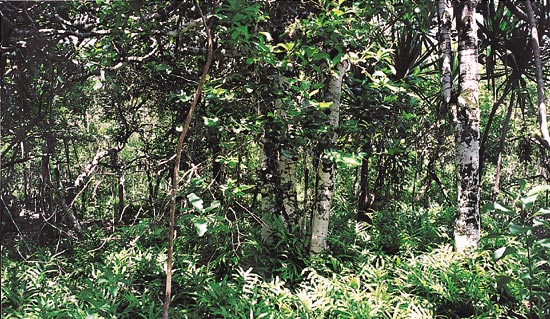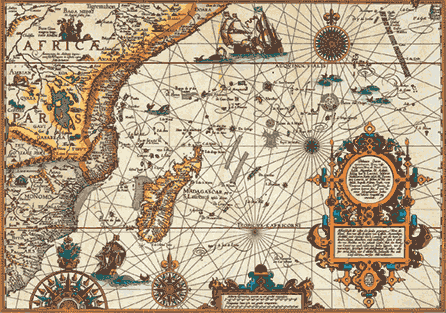
An Ebony Forest in Mauritius
The small island of Mauritius remained uninhabited by man for thousands of years, presumable because the island is in the middle of the large Indian Ocean, and was not on a major sea route.
Ancient civilizations would have accessed the Indian Ocean, and navigators such as the Greek, Egyptian, Persian, Indian, and Chinese made their way along the coastline to the eastern shores of Africa.

By around 1000 AD Arabs were sailing and trading along the African coast as far south as Mozambique and the Comoros Islands, and they probably called on Mauritius, although there is no mention of it on their early maps. The Portuguese rounded the Cape of Good Hope in 1488, and thus became the first recorded Europeans to sail into the Indian Ocean. Later they frequently visited Mauritius but did not document the unusual animals that they encountered there, as there seems to be no mention of the Dodo in any of their official records, although the name Dodo was attributed to them.
After the breakthrough in the Indian Ocean, other nations were anxious to
cash in on the potential trade there, and in 1598, the Dutch,led by Admiral Jacob van Neck,
sighted land near where their charts showed an island called Isla do Cerne. They
took possession of the island, renaming it Mauritius, in honour of their sponsor,
Prince Mauritz.
Admiral van Neck returned to Mauritius in 1601 with a fleet of five ships which was led by his flagship, the Gelderland.
Various Logbooks gave the first descriptions of what later became known as the Dodo:
“...we also found large birds, with wings as large as
of a pigeon, so that they could not fly and have legs like Portuguese penguins.”
(Heyndrick Jolinck, 1598)
“There are also other birds there which are as big as
our swan, with large heads, and on the head a veil as though they had a small
hood on their head; they have no wings but in their place there are three or
four black quills and where there ought to be a tail, there are four or five
small curled plumes of a greyish colour. We called these birds Walghvogels partly
because although we stewed them for a very long time…”
(Copied from Van Neck’s Journal, 1601)

The Dutch eventually decided to occupy Mauritius in 1634, and they built a fort near to the place where they had originally landed. Forests were destroyed in order to make way for imported crops such as sugar cane, rice, tobacco, indigo, vegetables and citrus trees, which were planted at the base of the mountains. The human population of Mauritius was greatly increased by sailors, invalids, convicts and slaves, which strained the wildlife population, and even the nauseating taste of the Dodo did not deter the hunters.
Humans were not the only predators. Rats and monkeys escaped from ships and posed a threat to Dodo eggs and chicks. Deer, pigs, goats, chickens, dogs and cats were all introduced to the island, each making life more difficult for the Dodo. Slowly, the sanctuary that had sheltered the Dodo for millions of years was being destroyed, and the Dodo was getting rarer.
The Dutch remained on the island until 1710, but the Dodos, which had seen the Dutch arrive, were not around to see them leave.

An Ebony Forest in Mauritius